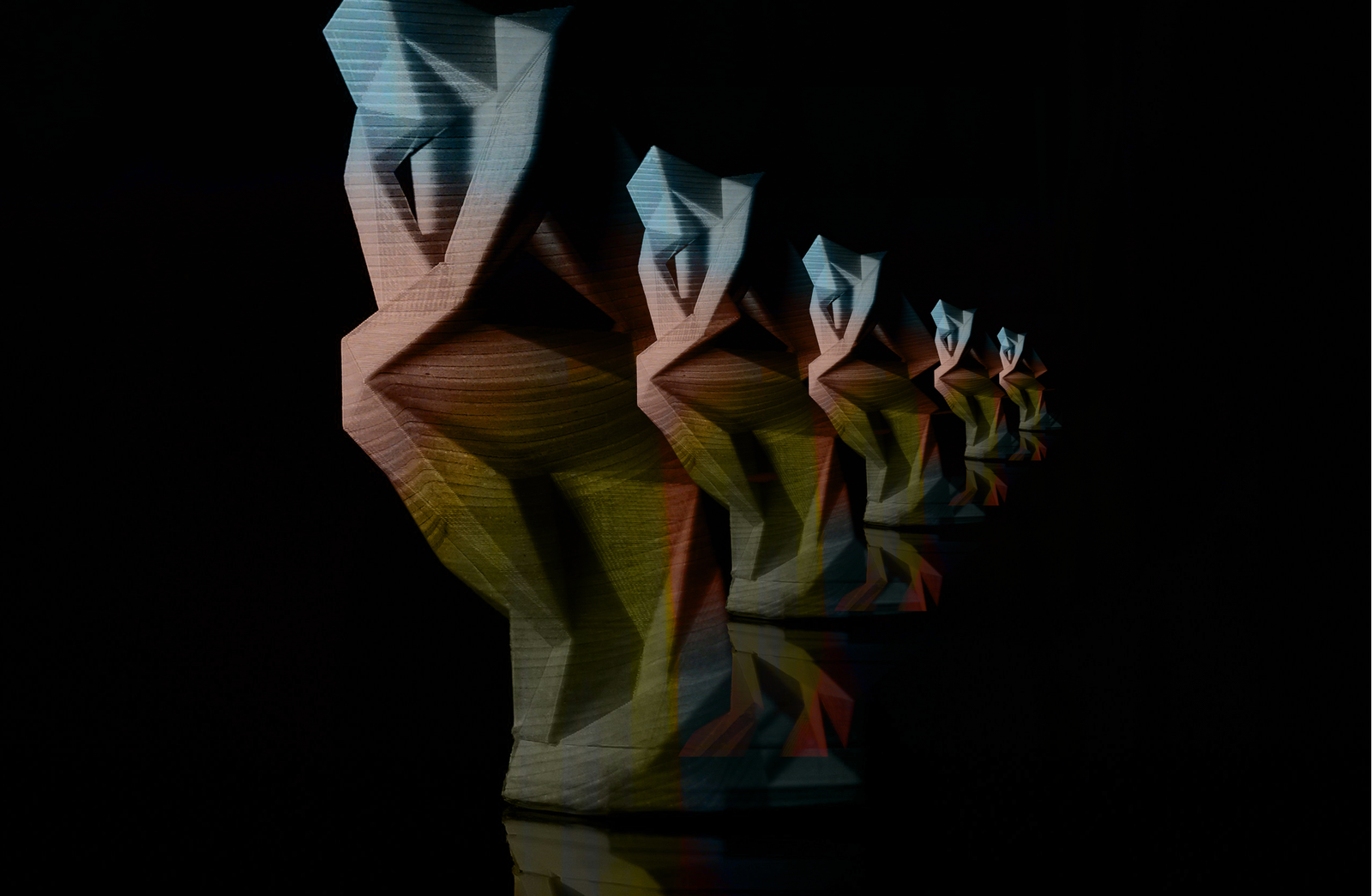The Three Waves Metaphor: How Culture Shapes the Way We Work for Justice
*Editorial Note: “The State of the Church in America” plenary session from Awakenings 2023 is now available for download. The keynote lecture you will read below was given by David Fitch, one of five speakers who addressed broad themes on “The State of the Church in America.” His plenary focuses on the effect of post-modernity within the Church, and how addressing deep-rooted structural change is only possible through a disruption of the entire frame of one’s ideology itself. In addition to Dr. Fitch’s plenary, in this recording you’ll hear from Oneya Okuwobi on Race and Equity, JR Woodward on Church Planting, Tracey Mathews on Contemplative Advocacy, and Charles Self offering a Historical Perspective on the American Church. Dr. Wayne Faison moderates a lively panel discussion at the end.
- Purchase “The State of the Church in America” video download here.
- Purchase “The State of the Church in America” audio download here.
Awakenings 2023 video and audio bundles, as well as other individual plenary and workshop sessions, will be available for purchase soon! ~CK

Sketchy Theology participated in Awakenings 2023 by creating these fantastic sketchnotes of most sessions. So great!
Over several years of teaching culture studies, I have found the “Three Waves” metaphor of feminism1 helpful in explaining culture, and how our understandings of culture have changed over the last 100 years. How we understand culture and its workings shapes how we engage culture for the gospel, God’s justice, and being the church in the world. It’s no small thing to understand how culture works. For me, the “Three Waves” metaphor is a helpful explanatory tool for getting at this.
The Three Waves (of Feminism)
Feminism, the work of people for justice in regard to the place and role of women in culture, has evolved over time in three waves (There’s a fourth wave – but it’s somewhat contested, and I want to focus on the main three). Here is my over-simplification, a caricature of the three waves.
- The First Wave of Feminism focused on women as INDIVIDUALS in society.
Here women leaders emerged to give voice to the inequality of women in relation to men. They did so in terms of the individual rights of women in relation to the individual rights of men. Women, they argued, should have the same right to work, the right to education, and the right to vote as men do. The focus was on women as individuals in relation to men as individuals.
This culminated in the women’s suffrage movement, with woman achieving the right to vote via the 19th amendment in 1920. More women were allowed and accepted in previous male-only educational institutions, as well as male-dominated workplaces. The Seneca Fall Convention of 1848 was a landmark for the beginning of this movement. Susan B. Anthony, Elizabeth Cady, and the abolitionist Sojourner Truth were all critical voices in this first wave of feminism.
- The Second Wave of Feminism focused on women within SYSTEMS in society.
In this wave, feminist leaders recognized that no matter how much you advocated for women’s rights as individuals qua men, if social systems remained the same little actual change would happen for women’s justice in society. Women might get a job, but they would get paid less than men. Women might have access to education, but if they are a mother, they must stay at home and take care of the child while the man works. The system is built for men to achieve certain things and women not to, and so these women leaders worked for change within the systems themselves, as well as within the gender structures in the economy, education, and family that disadvantaged women.
Leaders in this wave included Betty Friedan of Feminine Mystique and Gloria Steinem of Ms. Magazine. The National Organization of Women (NOW) worked for systemic changes. This wave saw legislative advancements like the Equal Rights Amendment, The Equal Pay Act (1963), and the Equal Credit Opportunity Act (1974) that gave the right to women to own a credit card in their own name. Reproductive rights moved to the forefront in this second wave.
- The Third Wave of Feminism focused on women as an IDEOLOGICAL CONSTRUCT.
This wave recognized that even if you change both individual minds, and the systems they benefit from, it is actually the ideological framework that shapes how we see, talk, and define women in relation to men. It is not enough to make women equal to men as individuals, nor is it enough to change the systems themselves, if women are still defined only in relation to men, with all the resulting misogyny, patriarchy, and dehumanizing sexualization of women’ bodies built in to those frameworks. If women are still seen, understood, treated, and ultimately categorized with this frame, women may have equal rights, equal pay legislation, and access to birth control, but their oppression remains. This oppression remains powerful because it is subtle, shaping how every woman sees herself in relation to men, how she must be the object of male desire. It’s the frame that is the actual problem because it shapes how we feel, desire, and understand our very identity. In the words of Judith Butler: Maybe it’s the category of “women” itself that’s the real problem.
Leaders and thinkers within this third wave, which began in the early 1990’s, include Gayle Rubin, Judith Butler, Luce Irigaray, and Kimberlé Crenshaw (of CRT fame) among others.
The First Wave of Feminism focused on women as individuals in society. Here women leaders emerged to give voice to the inequality of women in relation to men. They did so in terms of the individual rights of women themselves. (1/2) Share on X
In Wave 1, we seek to change the hearts and minds of individuals. Education is the primary mode delivered through various means. (2/2) Share on X
The Metaphor Applies Across Issues of Social Justice
This “Three Waves” metaphor, in all its simplicity, helps explain engagements with a myriad of other intractable social justice issues that rage on within our culture, including:
- Racism: We see it in the way racism has been engaged. In Wave 1 people ask or are asked, “Am I as an individual a racist? Do I have racial prejudice in my behaviors and ways of thinking?” In Wave 2, we think systemically about racism. The Civil Rights movement of the 1960s, voting legislation, the desegregation of schools, affirmative action, and other significant legislation came out of this period. Even with all that legislation, we still recognize that the frame of white supremacy and the persistent ideology of whiteness rule the ways we see and judge one another, shaping our aspirations and desires regardless of ethnicity. Such ideological frames ultimately shape the way our laws are written (or re-written) that govern society (e.g. the battle over CRT).
- Sexuality: We see it in the way sexuality is and has been engaged. In Wave 1, we focus on individual freedoms and the pursuit of (an authentic) self expression of love as liberated from traditional mores (This was the 1960s sexual revolution in a nutshell). In Wave 2, we recognize systems must be changed to allow for and reshape marriage for individual rights, including same sex marriage and increasing sexual self-expression. In Wave 3, we are aware that the whole frame of heterosexuality itself is fraught with misogyny, patriarchy, and relational abuse. Furthermore, other sexualities have emerged from and in reaction to the heterosexuality matrix, and we must be careful not to build on these same problematic frames, lest they carry forward its abuses and pain.
- Economics: We see the metaphor in the way economics and capitalism is engaged. In Wave 1, we focus on individuals as having access to the American dream. Everyone should be able to attain the American dream if you simply work hard enough! In Wave 2, we focus on the way that our capiticalist economic system favors certain groups over other groups economically. Finally in Wave 3, we see how capitalism as an ideological frame itself shapes how we see ourselves in terms of our own productivity, as a consumer good in and of itself. We see how capitalist ideology works to exploit and excuse exploitation by forcing those in poverty to blame themselves for the fact they never actually get anywhere. It’s a vicious cycle with no end in sight.
The Second Wave of Feminism focused on women within systems in society. In this wave, feminist leaders recognized that if social systems remained the same little actual change would happen for women’s justice in society. (1/2) Share on X
In Wave 2 we seek to change systems. Legislation via the local, state, or national level is the primary mode of change. We work for structural changes in our own organizations where we work, volunteer, or participate in church. (2/2) Share on X
Each Wave has a Different Emphasis in how We Work for Change
Each of the three waves has a different emphasis on how we work for change in society shaping our culture for justice and righteousness.
- In Wave 1, we seek to change the hearts and minds of individuals.
- Education is the primary mode delivered through various means.
- In Wave 2, we seek to change systems.
-
- Legislation via the local, state, or national level is the primary mode of change. We also work for structural changes in our own organizations where we work, volunteer, or participate in church.
- In Wave 3, there is no changing individuals through education (or arguing). People will simply dig in further to their ideological frames, as their identities are woven into the frame itself. Systems may be changed, but only incrementally.
-
- True change of systems can only happen through disruption of the frame itself.
It is my conviction that the only way ideologies are changed is through disruption of the frame. True ideological disruption can only happen when an alternative reality is lived out within a community and this alternative reality is so compelling that it cannot be argued with, but must be engaged with on a real interpersonal level. The church community, as a “demonstration plot” of the Kingdom of God, is a social strategy for the disruption of false ideologies. From my perspective, true change happens in the cultural world of Wave 3 only through the church being an incarnational presence within the villages, towns, and cities where we actually live.
The Third Wave of Feminism focused on women as an ideological construct. This wave recognized that it is actually the ideological framework that shapes how we see, talk, and define women in relation to men. (1/2) Share on X
In Wave 3, people will simply dig in further to their ideological frames, as their identities are woven into the frame itself. True change of systems can only happen through disruption of the frame itself. (2/2) Share on X
Two Quick Observations on Evangelicals
- Most evangelicals (using evangelical in the broadest faith-centric sense, not merely in a political sense), as well as post-evangelicals, progressive evangelicals, and mainline Protestants, are stuck between Waves 1 and 2, having no idea that Wave 3 is clearly operational.
- Because most evangelicals sincerely work so hard at their educational (Wave 1) and legislative (Wave 2) approaches to change, the vast majority of them play right into the abuses and antagonisms that thrive in the ideological frames (Wave 3) of the raging culture wars of our day (e.g. the ‘Trumpian/MAGA’ approach to politics). As a result, these churches and their leaders are often working hard while making little progress on the cultural issues of our day. Evangelicals often approach issues in ways which don’t touch on the shaping ideology driving people’s lives in politics, racism, sexuality, and economics.
Most progressive evangelicals, having had a brutally disappointing, even abusive, experience within the church, see no future for the church as a change agent in our culture. They therefore frequently find themselves locked in Wave 1 and Wave 2 strategies for social change, all while living in a Wave 3 society. This can lead to enormous frustration and anger while little changes amidst the places where they work for God’s justice in the world.
We need a renewal of the local church as God’s agent for transformation of both people’s individual lives and their social realities within the Kingdom of God through Jesus Christ.
I leave you with this.
Isaiah 42:6-7 is the calling of God’s servant-Messiah to lead a people and a way of life offered to the world. Isaiah concludes this, quoting Yahweh: “‘I, the Lord, have called you to demonstrate my righteousness…And you will be a light to guide the nations. You will open the eyes of the blind. You will free the captives from prison, release all those who sit in darkness.’”
The only way ideologies are changed is through disruption of the frame. True ideological disruption can only happen when an alternative reality is lived out within a community and is so compelling that it cannot be argued with. (1/2) Share on X
When a compelling alternative reality must be engaged with on a real interpersonal level, the church community, as a 'demonstration plot' of the Kingdom of God, becomes a social strategy for the disruption of false ideologies. (2/2) Share on X
*Editorial Note: David Fitch presented a version of this piece as a plenary keynote during Awakenings 2023. This article was originally published May 4th, 2023 at https://davidfitch.substack.com/p/the-three-waves-metaphor.
///
David Fitch (Ph.D) is a longtime pastor in Chicago, and the B. R. Lindner Chair of Evangelical Theology at Northern Seminary. He teaches on the issues the local church must face in mission including cultural engagement, leadership, and theology. He’s written multiple books, including Faithful Presence: Seven Disciplines that Shape the Church for Mission (2016), and the forthcoming 2024 release, entitled Reckoning With Power: Why the Church Fails When it’s on the Wrong Side of Power (Brazos, Jan 2024). You can find him on Facebook, Twitter, and Substack.
Footnotes
1 *Editorial Note: Describing the three (or four) waves of feminism with pinpoint accuracy is next to impossible. Your perspective on this varies due to a ton of factors. Four articles with varying perspectives are linked in Fitch’s introduction to his piece to read further on the three (or four) waves of feminism. ~CK



